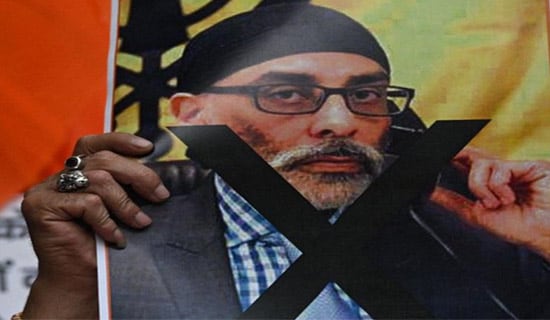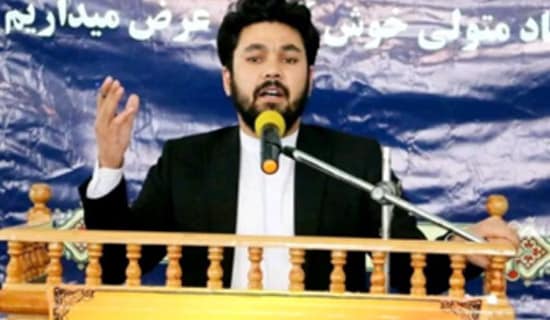On July 15, the Russian daily Vedomosti published an article by a Russian military expert, Ruslan Pukhov, about Russian military planning objectives.[1] In his article, Pukhov explains that the concern exhibited by NATO members about the Baltic States' security is misplaced, as Russia did not take any significant measure to bolster its military presence in the Kaliningrad region bordering on the Baltics. On the contrary, Russian forces were radically reduced in the area.
Pukhov stressed that Russia avoids being drawn into a direct military rivalry with the West, but concentrates its forces around its main and fundamental security issue: Ukraine. Pukhov wrote that Russia is creating three strong army groups on its border with Ukraine, which are capable, if necessary, of launching a quick strike in the direction of Kiev. Therefore, Pukhov explained, current Russian military planning is divorced from any 'threat from NATO' or 'threat to NATO', but is geared towards creating a powerful force on the Ukrainian border, "which will allow the Kremlin to expand the range of possible [military] force options to the Ukrainian situation."
Below are excerpts from the Vedomosti article:
'Russian Forces In The Kaliningrad Region Were Radically Reduced'
"...While the Western NATO members are actively campaigning to prevent a 'Russian invasion' of the Baltics and have decided to start deploying a multi-national military force in the three Baltic states and Poland, Moscow is surprisingly passive in this area. For the past four years, no significant measures have been taken to strengthen the Russian military presence in the Kaliningrad region and in Russian regions bordering on the Baltic states. In the 2009-2010 military restructuring era, Russian forces in the Kaliningrad region were drastically reduced and 'relieved' of heavy equipment (which was moved out), and have remained at the same low level ever since. Suffice it to say only one tank battalion remains in the Kaliningrad region (as part of the separate 79th Motor Rifle Brigade).
"Although the 11th Army Corps administration was established in 2015 to improve the management of the Kaliningrad troops, so far it has not led to any significant changes in combat strength, except for the restoration of brigade status to the separate 7th Motor Rifle Regiment (it is the second in the region and quite weak). It is even more revealing that no new modern combat equipment (including aviation equipment) is supplied to the units in the Kaliningrad, Pskov, and Leningrad regions [adjacent to the Baltics], while re-equipment is well under way in other regions of Russia. The air force of the Kaliningrad region is represented only by a few Su-27 and Su-24M aircrafts - in good repair but not upgraded. The only bright spot is the creation of a new army aviation brigade in Ostrov in the Pskov region, and putting a regiment of the new S-400 anti-aircraft system on combat duty in Kaliningrad(as part of the routine replacement of the old S-200 system).
"The famous Iskander-M missile systems have not been permanently stationed in Kaliningrad either. Moreover, the 152nd missile brigade stationed here will, apparently, soon be the last one in the Russian army to still have the old Tochka-U missile systems.

Russia's
border with the Baltics and Poland (Source: Russiasperiphery.blogs.wm.edu)
'Russia Has Been Consistently Building Up An Impressive Military Presence All Along Its Ukrainian Border'
SUPPORT OUR WORK

"Thus, Moscow demonstratively ignores the NATO hysteria around the Baltics, making it clear that it is not planning to threaten the Baltic and Scandinavian countries or Poland and is not seeking conflict here...While foreign mass-media and analysts are preoccupied with the 'Suwalki gap' [the only link between Poland and the Baltic states] in Lithuania, Russia has been consistently building up an impressive military presence all along its Ukrainian border.
"In the northern part of the border, the 1st Guards Tank Army was reconstituted in 2015, which includes (in addition to the "elite" 2nd 'Taman' Guards motorized rifle division and 4th 'Kantemirov' Guards tank division) the 6th Tank Brigade in Nizhny Novgorod and, most importantLY, the new 144th motorized rifle division, which was formed in 2016 in the Smolensk and Yelnya region.
'Further to the south, the administration of the 20th combined arms army (which is being practically re-created) has been moved from Nizhny Novgorod to Voronezh. Its core is the re-activated (after its disbandment in 2009) 10th guards tank division with headquarters in Boguchar. The entire area of the Kursk, Belgorod and Voronezh regions is being actively saturated with troops, including two motor rifle brigades that were transferred here; in the future, another division may be formed here.
"Finally, in the Rostov region, which has been practically devoid of combined arms units since 1989, the creation of the 150th motor rifle division has been started in Novocherkassk. There are reports that another army may be formed here, under command of the Southern military district with further increase of its personnel.
"The meaning of all this activity is obvious - Russia is creating three strong army groupings on the border with Ukraine (where only three years ago there were no troops at all), capable, if necessary, of launching a quick strike in the direction of Kiev (it's 270 km from the Russian border via Chernigov) in the north, and to create two powerful 'pincers' to envelope and surround the main Ukrainian army group in the south - in the Left Bank area, where it is already tied at the front line against the self-declared republics in the Donbass. Ukraine simply does not have (and cannot create in the near future, because of resource limitations) military forces capable of parrying the blow of these groups and countering a possible large-scale 'deep' operation of the Russian forces on the whole. In addition, Russia has considerable reserves in the Southern military district (two armies - the 49th and the 58th), as well as in the Central and Eastern military districts (according to available data, there are plans to create three more divisions there). There is also active re-equipment of the air force, air defense forces, and army aviation in areas 'south of Moscow'.

Russia- Ukraine border with potential directions of Russian
attacks (source: Royal United Services Institute)
'Current Russian Military Planning...Proceeds Divorced...From Any NATO Threat Or Threat To NATO'
"Thus, current Russian military planning and construction proceeds along its main route with no connection whatsoever to any 'threat from NATO' or 'threat to NATO'. It is basically subordinated towards the main and fundamental security issue for Moscow today - the Ukrainian one. The Russian leadership, having since 2014 lost all significant leverage over Ukraine, except for force, must place its bets on this [force]. Creating a powerful force on the Ukrainian border will allow the Kremlin to expand the range of [military] force options in reaction to the Ukrainian situation. In this context, the relations between Russia and NATO are turning into a theater of the absurd and a dialogue of the deaf; both sides are, so to speak, moving along parallel lines. On the one hand, Moscow brushes off NATO's formal concerns, considering the issue of a possible Russian invasion of the Baltics (to say nothing of Poland or Sweden) to be complete nonsense, since Russia does not have any motive or power in the region to do anything of the kind. On the other hand, it is obvious that NATO's reinforcement in the Baltic states is not really guided by defensive goals, but rather it is a way of exercising pressure on Russia over various issues, including the Ukrainian one, while simultaneously pretending that NATO is only concerned with the Baltic region.
"The paradox is increased by the fact that, from Moscow's point of view, it is acting in line with the Russian foreign policy ideal, with its idée fixe about demarcating spheres of influence -in fact, by recognizing the Baltics as the West's sphere of influence, the Kremlin continues to defend 'its own' sphere of influence in Ukraine and so on in the post-Soviet space. The West actively disputes these claims of the Russian side, but so far (for a number of reasons) cannot create a military pressure capable of diverting Russian resources from Ukraine.
"One can draw the conclusion that so far the Russian leadership has pursued a sufficiently rational and reasonable policy as far as allocation of defense resources is concerned...
"With the current power balance, Russia will invariably be the losing side in any conventional arms race against the US or NATO. Apparently, the Kremlin realizes that clearly.
" Avoiding such an arms race, restraint in the face of the NATO escalation (including NATO deployment close to the Russian border), and maintaining a dialogue, even if only a formal one, with the West in the military sphere (which is what the NATO-Russia Council is for, despite the touch of surrealism in its existence) will allow Russia not only to economize on resources and decrease at least some of the Western concerns, but, in longer term, may lay the groundwork for a hypothetical 'grand bargain' between Russia and the West on settling a wide range of mutual security issues."
Endnote:
[1] Vedomosti.ru, July 15, 2016.




